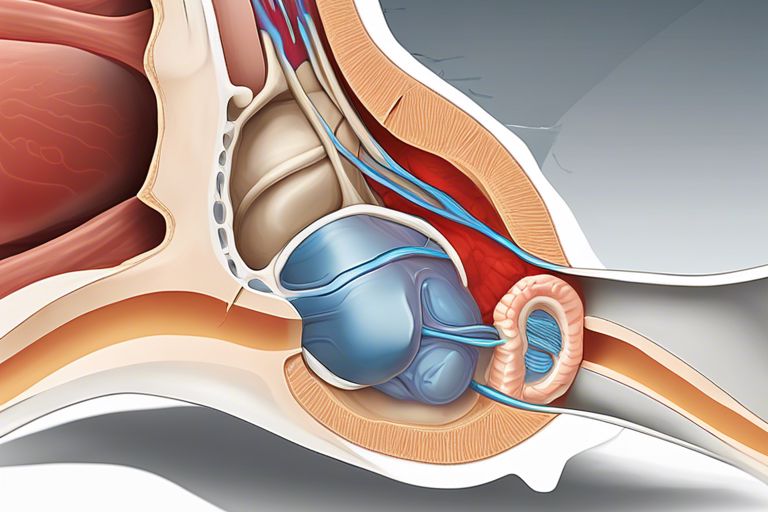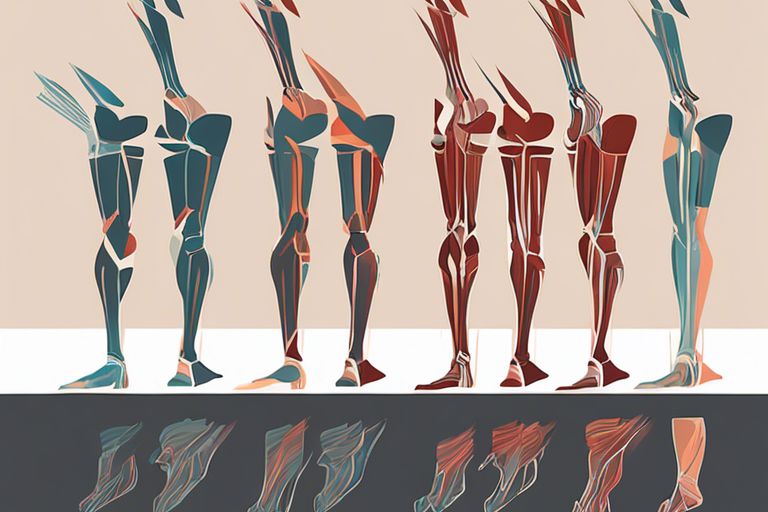Are you looking to improve your joint health? Walking can have a significant impact on the health of your joints. It’s a low-impact exercise that can help improve your flexibility, strengthen the muscles around your joints, and reduce your risk of developing osteoarthritis. Additionally, walking can help you maintain a healthy weight, which in turn reduces the strain on your joints. However, it’s important to practice proper form and wear supportive footwear to prevent injury and protect your joints. In this blog post, we’ll explore how walking can benefit your joint health and provide some tips for incorporating it into your routine.
The Biomechanics of Walking
The way you walk can have a significant impact on your joint health. To understand how walking affects your joints, it’s important to delve into the biomechanics of walking. This involves examining the movement and forces acting on your joints as you take each step.
Anatomy of Joints Involved in Walking
When you walk, several joints in your body are involved in the movement. Your ankles, knees, hips, and spine all play crucial roles in the biomechanics of walking. These joints work together in a coordinated manner to support your body weight and facilitate a smooth gait. Proper alignment and function of these joints are essential for optimal movement and reduced stress on your joints.
The Movement and Forces Acting on Joints During Walking
As you walk, your joints experience both movement and forces that can impact their health. The smooth, coordinated movements of your joints during walking help to distribute forces evenly, reducing the risk of injury. However, improper gait or biomechanical issues can lead to increased stress on certain joints, potentially leading to wear and tear over time. Understanding the movements and forces acting on your joints during walking is essential for maintaining optimal joint health.
Benefits of Walking for Joint Health
If you have been wondering about the impact of walking on your joint health, you will be pleased to know that walking has numerous benefits for your joints. Regular walking can contribute to the overall health of your joints by improving joint lubrication, strengthening joint-supportive structures, and promoting flexibility and range of motion.
Improvement in Joint Lubrication
When you walk, the movement of your joints stimulates the production of synovial fluid, which helps lubricate and protect your joints. This lubrication reduces friction between the bones, preventing wear and tear on the joint surfaces. Additionally, the circulation of synovial fluid helps deliver essential nutrients to the cartilage, keeping it healthy and resilient.
Strengthening of Joint-Supportive Structures
The muscles, ligaments, and tendons that support your joints are essential for maintaining joint stability and preventing injury. By walking regularly, you engage these supportive structures, helping to strengthen and tone them. Stronger muscles around the joint provide better support and protection, reducing the risk of joint pain and injury.
Walking and Arthritis Management
Now that we have established the positive impact of walking on joint health, let’s delve into how walking can be beneficial for managing arthritis. Whether you are dealing with osteoarthritis or rheumatoid arthritis, incorporating walking into your daily routine can have a significant impact on your joint health and overall well-being.
Impact of Walking on Osteoarthritis
If you are living with osteoarthritis, you may be concerned about the impact that walking could have on your joints. However, research has shown that walking can actually help ease the symptoms of osteoarthritis. When you walk, you help to strengthen the muscles that support your joints, which can reduce the stress on the joint itself. Additionally, walking helps to improve joint flexibility and range of motion, which can be beneficial for managing osteoarthritis.
Walking Strategies for Rheumatoid Arthritis Patients
For individuals with rheumatoid arthritis, walking may present some challenges due to joint inflammation and pain. However, it is important to understand that walking can still be a beneficial form of exercise for managing rheumatoid arthritis. When walking with rheumatoid arthritis, it is important to start slow and gradually increase your walking distance and intensity. Incorporating low-impact walking exercises, such as walking in a pool or on a flat, cushioned surface, can also help to reduce the impact on your joints while still providing the benefits of walking.
Now that you understand the impact of walking on arthritis management, you can confidently incorporate walking into your daily routine to improve your joint health. Remember to consult with your healthcare provider before starting any new exercise routine, and consider working with a physical therapist to develop a personalized walking plan that meets your specific needs. By taking proactive steps to include walking in your arthritis management plan, you are taking a positive step towards improving your joint health and overall quality of life.
Risks and Precautions
Your health and safety are of utmost importance when it comes to walking for joint health. While walking offers numerous benefits, there are also potential risks and precautions to consider to ensure that you do not inadvertently cause harm to your joints.
Overuse Injuries Related to Walking
Engaging in excessive or intense walking without proper rest and recovery can lead to overuse injuries such as tendinitis, stress fractures, and muscle strains. These injuries can occur when you push yourself too hard without allowing your body adequate time to recover. It is important to listen to your body and give yourself rest days to prevent overuse injuries. Additionally, using proper footwear and maintaining good posture while walking can help reduce the risk of these injuries.
Guidelines for Safe Walking to Protect Joints
When it comes to walking for joint health, there are some guidelines you should follow to protect your joints. It is crucial to start with a proper warm-up and cool down before and after walking to prepare your muscles and joints. Additionally, incorporating strength training exercises to improve the stability of the muscles around your joints can help prevent injuries. Furthermore, maintaining a healthy weight and following a balanced diet can reduce the strain on your joints and promote overall joint health.
Conclusion
Ultimately, incorporating regular walking into your daily routine can have a positive impact on your joint health. By engaging in low-impact exercise, you are improving your joint flexibility and strength, as well as reducing the risk of developing arthritis and other joint-related conditions. Furthermore, walking helps to maintain a healthy weight, which in turn reduces the strain on your joints. It is important to remember that consistency is key – by making walking a regular part of your exercise regimen, you can significantly improve and maintain your joint health for the long term.




